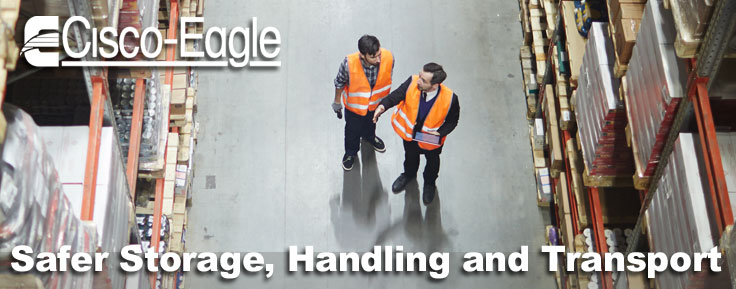How to Make Warehouse & Plant Visitors Safer: A Guide
Safety is always a concern for industrial operations, but visitors take the dangers to another level.

In a fast-paced distribution center, there is plenty of forklift traffic, moving conveyors, packing machines, carousels, and dock doors. Same with manufacturing; you have all kinds of production machinery, welding (human and robotic), and heavy material being handled, stacked, or processed, along with the forklifts and other handling equipment. It’s hard enough to keep your own people – the ones who should know the lay of the land – safe in these environments. But what about visitors who haven’t had the benefit of your safety training and the situational awareness that your employees develop over time?
Ideas for visitor safety in industrial operations:

- Lack of hazard identification: Visitors probably won’t have the hazard awareness that people who are in the plant every day possess. To protect them, you must identify hazards, control them, and help your workers become aware of them. A salesperson, maintenance guy, or inspector who’s visiting simply can’t be as oriented to danger as an employee. By mapping all hazards from forklift traffic paths to machinery that may produce fumes, you can post warnings, warn visitors, and otherwise assist them in being safe while they’re in your building.
- Provide escorts: Since visitors lack familiarity with your operation, provide them escorts when possible. You can take the approach of labeling traffic lanes for pedestrians with inexpensive methods such as striping and footprint paths.
- Dress for success: Make sure visitors have the proper earplugs, goggles, face masks, hazard suits, footwear, etc. Don’t allow a button down visiting executive to hit the floor in his suit and tie, wearing inappropriate dangling jewelry or loose clothes. If your floor workers wear reflective visibility vests, require your visitors do the same.
- Lay down the law: Visitors are usually in your facility for a specific purpose, and they are typically more focused on that than they are their safety. Their heads may buried in a clipboard, drawings, tablet, camera, or other specialized equipment, and they won’t pay attention to a forklift’s reversing alarm or a shouted warning for another danger. They will lean over running conveyors or put their hands in dangerous places. Before they are allowed to step onto a production floor, visitors should receive a course on the safety rules in your facility and information on potential hazards. Train your people to help watch for the safety of visitors.
- Automate safety wherever you can: Using warehouse motion safety sensors or automated forklift safety gates can contribute to the safety of your everyday workers as well as to that of visitors. They can help to close the visitors’ situational awareness gap.
- Control visitor access: If there are areas where visitors aren’t supposed to be, make sure they do not go there. If they have no business in a dangerous area, instruct them not to enter it. Equipment such as driver cages can help control free-wandering visitors in a busy warehouse (these cages allow visitors to enter the facility through warehouse doors, but do not allow them to leave the waiting area until admitted by your people). Visitor access badges and a check-in process should be required to visit dangerous areas.
A safety consultant once told me that the most endangered person in any industrial operation was a visitor
Resources for industrial safety:
Tags: pallet racking, Safety & Ergonomics, warehousing, Manufacturing, industrial safety
Scott Stone is Cisco-Eagle's Vice President of Marketing with 35 years of experience in material handling, warehousing and industrial operations. His work is published in multiple industry journals an websites on a variety of warehousing topics. He writes about automation, warehousing, safety, manufacturing and other areas of concern for industrial operations and those who operate them.




